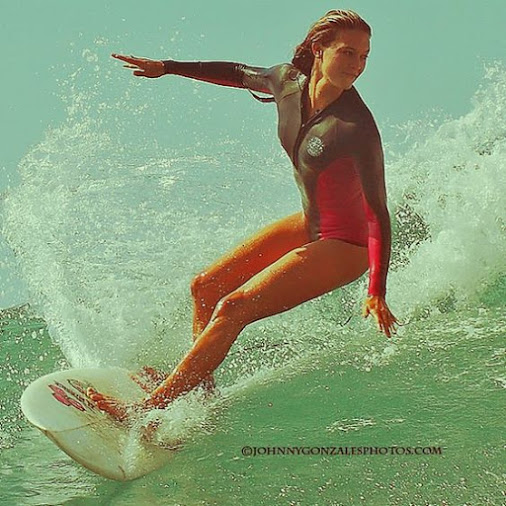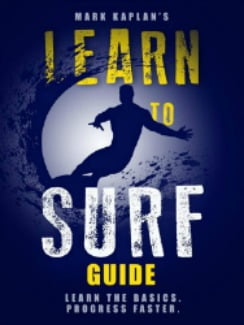Riding the Surfing Short Board
Riding the surfing short board should come after mastering the fundamentals on a soft top board. The surfer learns the timing of catching foam waves, how to execute a perfect pop up, and demonstrate the ability to ride straight to the beach without falling off.
The short board is a reduction in the volume from a larger board. It becomes more difficult to paddle as the surfer’s weight pushes it under water. It requires the timing of catching real waves, and it is less stable unless the pop up is perfect.

Catching Real Waves
A real wave forms and gives the surfer a few seconds to paddle down the face. The surfer has to be in the right position to allow the real wave to roll under the surf board. Then the surfer paddles hard for three strokes and pops up.
On a short board the surfer rides in the pocket. He can get into the pocket by riding down the face and executing a bottom turn into the pocket. A bottom turn is like all maneuvers, turning the eyes and upper torso in the direction of the carve and then placing a little weight on the toes or heels to initiate the carve.
The surfer can also get into the pocket by pushing the nose of the board toward the pocket after catching the real wave and before popping up. The third way to get into the pocket is to paddle along side the unfolding wave at the corner and let the wave come under the board while the board is pointed at a 45 degree angle toward the beach.
Carving on a Real Wave
There are three main carves or maneuvers. The first is the bottom turn, explained above, which gets the surfer into the pocket off the face of the wave. The bottom turn is used again to ride up the face of the wave to rip the lip, do a trick or an aerial. The bottom turn is used while ripping the lip to turn back down the face of the wave.
Accelerating is crucial for a short board. After getting into the pocket, the surfer moves the nose of the board up and down the face of the wave with his front foot. This increases the speed and keeps the surfer ahead of the falling lip. The speed is also necessary to perform maneuvers.
The third major maneuver for a short board is the cut back. The cut back allows the surfer to return to the power, stall on the wave, or show some style. The cut back is executed by turning the eyes and upper torso away from the face of the wave in a reverse and placing pressure on the rail furthest from the face. The board will then reverse directions.
The best way to learn is to watch videos, read, and observe surfers in the water. Have fun.
Learn More
My New Surfing Course in an E-Book plus Demo Video or Audio Version
Get the 18 Chapter, 7,500 word Course that can prepare you for a lesson or give you the fundamentals if you are going to try it on your own. 10 years of teaching 350 students a year has given me the insights on the most precise measures you must follow for success. This course is what I teach on the dry land and in water instruction. The Course includes a 15 minute video on my dry land and in water demonstration. Only $4.95
Buy the E-Book and start learning $2.99. Learn to Surf
Buy the Paperback on Amazon $7.95
Get Learn to Surf Course in 29 minute AUDIO. Great prep for a lesson, reviewing after a lesson, learning on your own, refreshing after not having surfed for a while. See Table of Contents. Only $7.95.

For Oceanside Surf Lessons, see the Home Page
See the Post Search Lessons Teach Fundamentals
See the Post Catching Real Surf Waves
See my Dry Land and in Water Demo video
See my other Surf site for more Posts
I have lowered the price of Courses and Books for the lock down price of $2.99
80 page Learn to Surf Book
![Surf Instructions Beginner to Advanced: Learn to Ride Waves by [Kaplan, Mark]](https://images-na.ssl-images-amazon.com/images/I/51HswFtoBQL.jpg)
